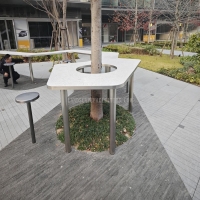Welcome to the website for landscape facilities products and knowledge.
How does the table’s surface texture impact user experience, such as writing or device usage?
The texture of a table’s surface is often overlooked, yet it profoundly influences daily activities like writing or using electronic devices. A smooth, polished finish provides minimal resistance, allowing pens to glide effortlessly during note-taking. This reduces hand strain and improves writing speed, making it ideal for offices or study areas. Conversely, a rough or grainy texture can cause uneven pen movement, leading to jagged handwriting and potential discomfort over prolonged periods.
For device usage, surface texture plays a critical role in stability and safety. Sleek tables offer a secure base for laptops and tablets, preventing slips and scratches. However, overly glossy surfaces might reflect glare, straining eyes during screen time. Textured materials like matte wood or composite finishes enhance grip, reducing the risk of devices sliding off accidentally. Additionally, rough textures can trap dust and debris, potentially scratching device casings or interfering with ventilation ports.
Material choice further defines user interaction. Glass tables, while modern, may feel cold and slippery, affecting writing precision. Solid wood surfaces with natural grains offer warmth and slight friction, supporting both writing and device stability. Laminate finishes balance smoothness and durability, catering to diverse needs. Practical considerations include cleaning ease—smooth surfaces wipe clean quickly, while porous textures may require more maintenance.
Ultimately, selecting the right table texture involves balancing aesthetics with functionality. Whether for work, study, or leisure, understanding these impacts helps create an ergonomic and efficient environment.
Related search:

Recommendation
An outdoor bar counter with stainless steel and terrazzo materials in an irregular shape